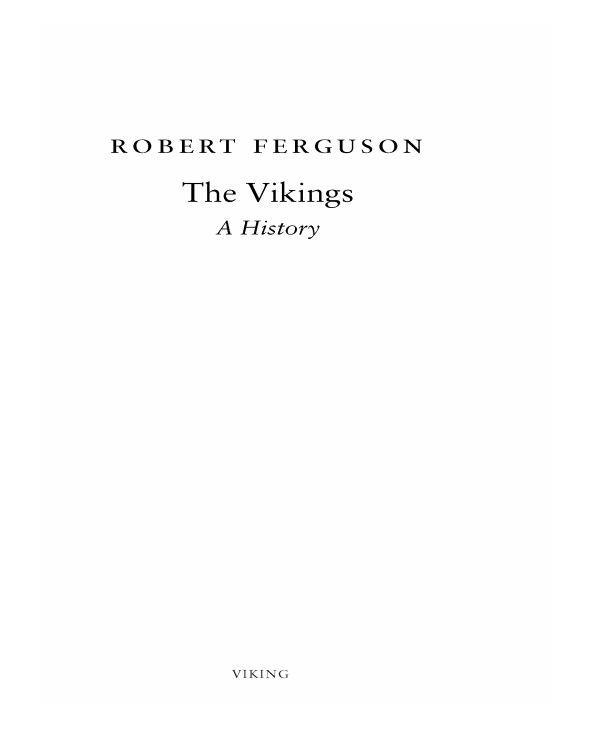
The Vikings
A History
کتاب های مرتبط
- اطلاعات
- نقد و بررسی
- دیدگاه کاربران
نقد و بررسی

September 15, 2009
Scandinavian studies scholar Ferguson puts the violence back in the Viking Age in his knotty, dense, intriguing look at these restless voyagers and conquerors.
The so-called Viking Age—roughly between 793 CE, with the raid on the island of Lindisfarne, and 1066, with the Battle of Hastings—got under way when the sea-faring Norsemen began their marauding infiltrations of the British Isles and the European continent, venturing as far as Muslim Spain and Constantinople. The motivation for their movement south is sometimes attributed to the overpopulation and scant resources of their Scandinavian homelands, but Ferguson debunks this idea, advancing the case of holy war in retaliation for the slaughter of Saxons by the crusading Christians under Charlemagne. These pagan seaborne raiders were violent, terrifying and merciless, and Ferguson traces their plundering devastation across a vast swath of territory: the Shetland and Orkney islands, where they wiped out the native Picts; Ireland and England, where they established strongholds; Normandy, where the Carolingian rulers appeased them by offering land and fortunes and their leader Rollo eventually converted; across the Baltic into Slavic lands; Seville and the Iberian peninsula; and Iceland and Greenland, with brief treks to Newfoundland. Ferguson notes how the study of place-names reveals the extent to which the Vikings seized control. He looks at Viking culture and pre-Christian beliefs, such as their rich cosmology and myths, skaldic verse, strong sense of communal responsibility, a view to an afterlife evident from burial ceremonies and an ingrained employment of law—the Danelaw. The author also examines King Harald Bluetooth's monument to his conversion, the pyramidal rune-stone in Jelling, Denmark. Ferguson's scholarly study requires close attention, but the intellectual rewards are plentiful.
Provides a significant deepening of our knowledge of the Vikings.
(COPYRIGHT (2009) KIRKUS REVIEWS/NIELSEN BUSINESS MEDIA, INC. ALL RIGHTS RESERVED.)

November 1, 2009
Ferguson ("Enigma: The Life of Knut Hamsun; Henrik Ibsen: A New Biography") offers a comprehensive overview of the Viking age, covering mythology and tradition alongside the many bloody forays Viking warriors made into Europe and the North Atlantic between roughly 790 and 1100 C.E. Although Ferguson often notes how incomplete the source material is, he tells a full and lively story and is transparent about where records or interpretations diverge. The narrative occasionally threatens to get bogged down in a confusion of Olafs, Olavs, and Olofs, but Ferguson keeps the pace up with numerous fascinating tidbits. He describes Viking words still used in modern English, the Viking origins of major British cities, and the dark rituals the community hung onto as Christianity crept into Denmark, Scandinavia, and Iceland, eventually bringing the population into a more peaceful modernity. VERDICT Ferguson has produced a readable and accessible book that will serve as a solid introduction to Viking history, even for those with no previous knowledge of the subject.Elizabeth Goldman, Kingston Frontenac P.L., Ont.
Copyright 2009 Library Journal, LLC Used with permission.

November 1, 2009
Sporting monikers such as Sven Forkbeard and Harald Bluetooth, the Vikings left arresting traces in saga and chronicle, in addition to their signature destruction and massacre. Ferguson synthesizes Viking scholarship for a general audience and follows the Vikings wherever they went. Spreading from Scandinavia, they entered written records as a result of raids on Britain and Ireland in the late 700s; soon the divisive Carolingian empire, and the land that would become Russia, would experience the Viking scourge as well. But along with slaves and booty came the encounter with Christianity, among whose proselytizers numbered the fearless believers who brought the Gospel to worshippers of Odin and Thor. The pagan-Christian interface informs Fergusons narrative, and by emphasizing experiences of the conversion process by identifiable individuals within a centuries-long direction of Vikings forsaking their old religion, the author textures the pillage that he asserts is necessary to a complete understanding of the Viking age. Integrating archaeological, genetic, linguistic, and literary information, Ferguson realizes a Viking history bound to satisfy the interested reader.(Reprinted with permission of Booklist, copyright 2009, American Library Association.)

























دیدگاه کاربران